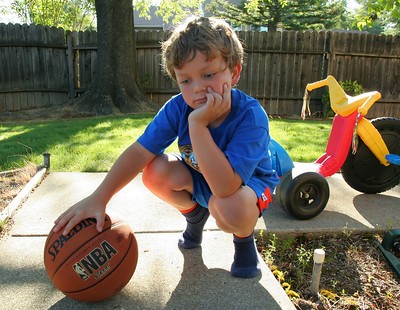How to Help Your Children Wait
 Would you like to raise a patient child? (Wait…is that an oxymoron?) They say that patience is a virtue, but it's a virtue that is hard for adults, let alone preschoolers. But waiting is a part of life, so we need to help our children learn to cope with it.
Would you like to raise a patient child? (Wait…is that an oxymoron?) They say that patience is a virtue, but it's a virtue that is hard for adults, let alone preschoolers. But waiting is a part of life, so we need to help our children learn to cope with it.
An important first step is to set realistic expectations. It is easier for children to wait if they are expecting to wait. Set a timer where they can see it, and tell them, "We'll go to Katie's house/ have dinner/ play together in 10 minutes, when the timer beeps."
Let them know what's coming next. Children get much more antsy when they don't know what is going to happen. One important note: make sure you tell them in the order it will be happening. (Say, "First we'll have a nap, then we'll go to the park," instead of "We'll go to the park after nap.") Kids' brains understand sequence in the order they hear it—it's difficult for them to process verbal cues like "before this" or "after that."
Distract. Children are all in the present, so if the most present thing to them is the discomfort of waiting, you're in for trouble. However, simple games and toys can easily distract a child from their impatience. Carry a sewing card, a couple of pipe cleaners, or a paper doll in your purse for waiting rooms or moments of boredom when you are out. Show them how to make pipe-cleaner people, or imagine together who the paper doll could be. If you don't have any toys, take turns telling a story together, count objects you see, sing songs together, play I Spy or think of all the words that rhyme with "ball."
Minimize discomfort. Children will be more patient in any setting if they are not hungry, thirsty, or tired. Help your child learn to recognize these feelings by gently labeling the feelings for them. Take a healthy snack and a bottle of water with you when you go out. Plan outings and appointments at times when your child will be well-rested. If a child is having trouble waiting for a meal, give him part of the meal while you are preparing the rest—perhaps some veggies to count and eat.
Model patience. While modelling alone is not enough to help a child learn to wait gracefully, your kids do copy your behavior. They will learn more from watching how you handle delay and frustration than from how you tell them to handle difficulties. This may take some soul-searching on your part to learn what you need to be more patient. Maybe you need a snack and a nap too!
Slowly stretch their ability to wait. Don't overwhelm your kids with more waiting than they can handle. As much as possible, structure your days so little waiting is required. But pay attention to the situations that your child finds difficult. Minimize waiting in those situations, but then slowly start to stretch them as you teach them strategies for patience.
As you implement the above points, your child will be learning skills like recognizing the feelings of hunger, thirst, and tiredness and addressing those needs, planning for waiting by preparing activities (taking a book or a game with them), knowing ways to creatively entertain themselves through games, stories, and songs, and keeping a positive attitude. As you coach them through these skills, your children will learn the strategies needed to be patient people.
Photo Credit: John-Morgan cc
Related Posts
By accepting you will be accessing a service provided by a third-party external to https://growthandgiggles.com/

